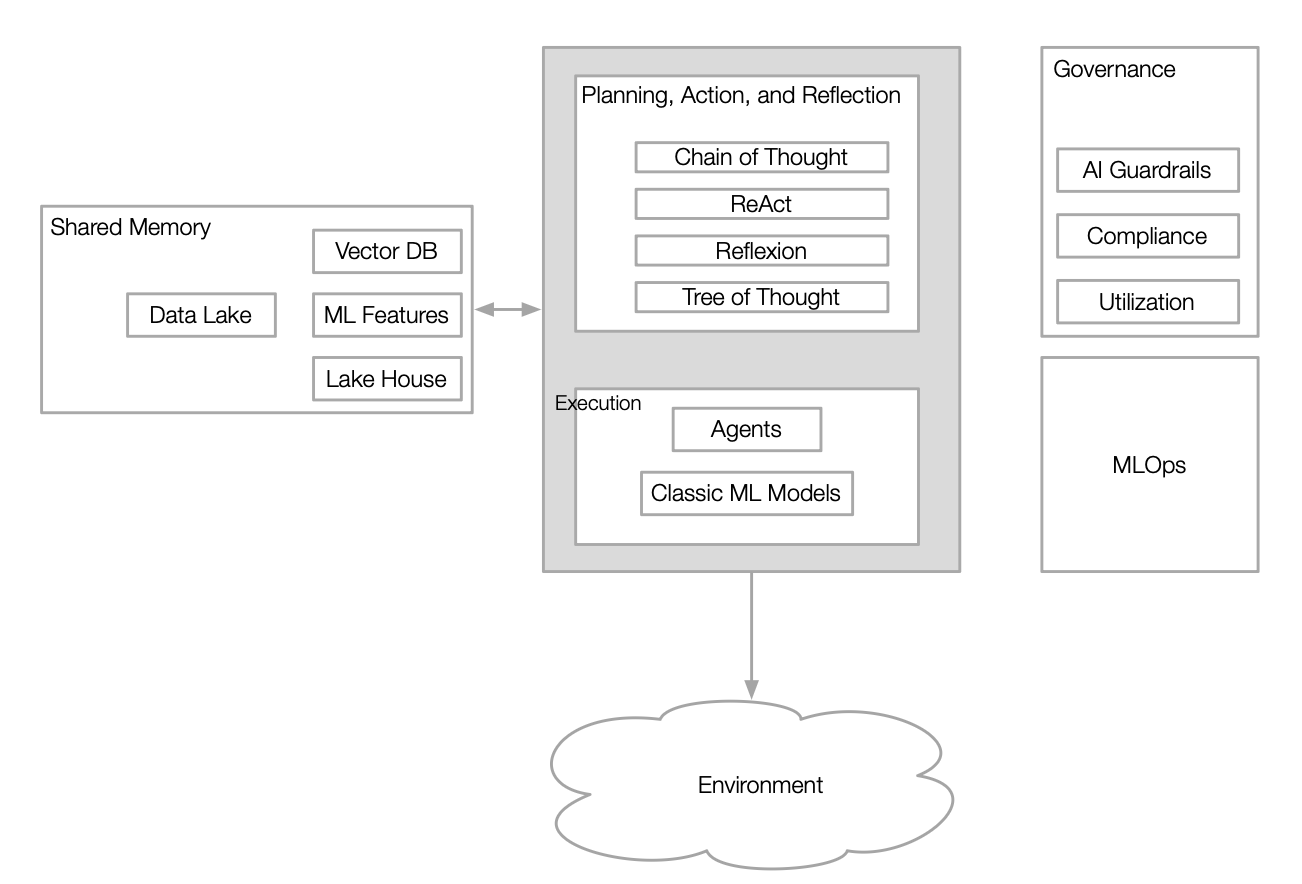This architecture came about when I was thinking about the right components that will enable agents in an enterprise. This is a strawman that integrates multiple specialized components designed to create a robust, intelligent system capable of sophisticated reasoning, execution, and continuous improvement. The architecture consists of five primary components: a) Shared Memory, b) Planning, Action, and Reflection, c) Execution, d) Governance and e) MLOps frameworks.
Note that no system exists in a vacuum and the any existing stack and architecture will have significant impact on the final design.

An enterprise probably already has these components and we just need to extend them to support Agents.
Shared Memory
The foundation of this system's intelligence is a memory infrastructure that enables knowledge persistence and retrieval:
- Data Lake: Forms the primary storage layer for raw, unprocessed data
- Vector DB: Enables semantic search and similarity-based retrieval of information using vector embeddings
- ML Features: Stores processed features ready for model consumption
- Lake House: Provides structured data warehousing capabilities with the flexibility of data lakes
This shared memory system maintains bidirectional connections with the planning and action components, enabling improvement of the data as learnings happen.
Planning, Action, and Reflection
At the core of the system's cognitive abilities is a sophisticated reasoning framework:
- Chain of Thought: Implements step-by-step reasoning processes that break complex problems into manageable sequences
- ReAct : Integrates reasoning and action in an iterative process, allowing the system to plan, act, observe, and adjust
- Reflexion : Enables the system to evaluate its own outputs and performance, creating a feedback loop for continuous improvement
- Tree of Thought: Extends chain-of-thought reasoning with branching decision paths, allowing exploration of multiple solution approaches simultaneously
Note that all of them need not be deployed at once. Initially Chain of Thought could be the one implemented and then adding the rest iteratively.
Execution
The execution layer transforms reasoning into concrete actions:
- Agents: Autonomous LLM agents designed to perform specific tasks based on instructions from the planning layer
- Classic ML Models: Traditional machine learning models that handle specific, well-defined tasks within the broader system
The execution layer interfaces directly with the Environment, which represents the external world or problem space where the system operates.
Governance
Our architecture incorporates robust governance controls to ensure responsible AI deployment:
- AI Guardrails: Safety mechanisms that prevent harmful outputs or actions
- Compliance: Features ensuring adherence to relevant regulations and standards
- Utilization: Monitoring frameworks that track system usage and performance
MLOps
Supporting the entire architecture is a comprehensive MLOps framework that manages the operational aspects of machine learning deployment, including model versioning, deployment automation, and performance monitoring.